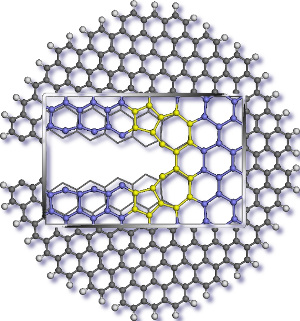Rice researchers find subtle interactions with substrate may lead to better control

Graphene islands formed in two distinctly different shapes on separate grains of copper (colored in blue and red) grown simultaneously because the substrates' atomic lattices have different orientations, according to Rice University researchers. Image by Y. Hao/coloring by V. Artyukhov
What lies beneath growing islands of graphene is important to its properties, according to a new study led by Rice University.
Scientists at Rice analyzed patterns of graphene – a single-atom-thick sheet of carbon – grown in a furnace via chemical vapor deposition. They discovered that the geometric relationship between graphene and the substrate, the underlying material on which carbon assembles atom by atom, determines how the island shapes emerge. The study led by Rice theoretical physicist Boris Yakobson and postdoctoral researcher Vasilii Artyukhov shows how the crystalline arrangement of atoms in substrates commonly used in graphene growth, such as nickel or copper, controls how islands form. The results appear this week in Physical Review Letters.
– See more at: Rice News




 science at Rice
science at Rice